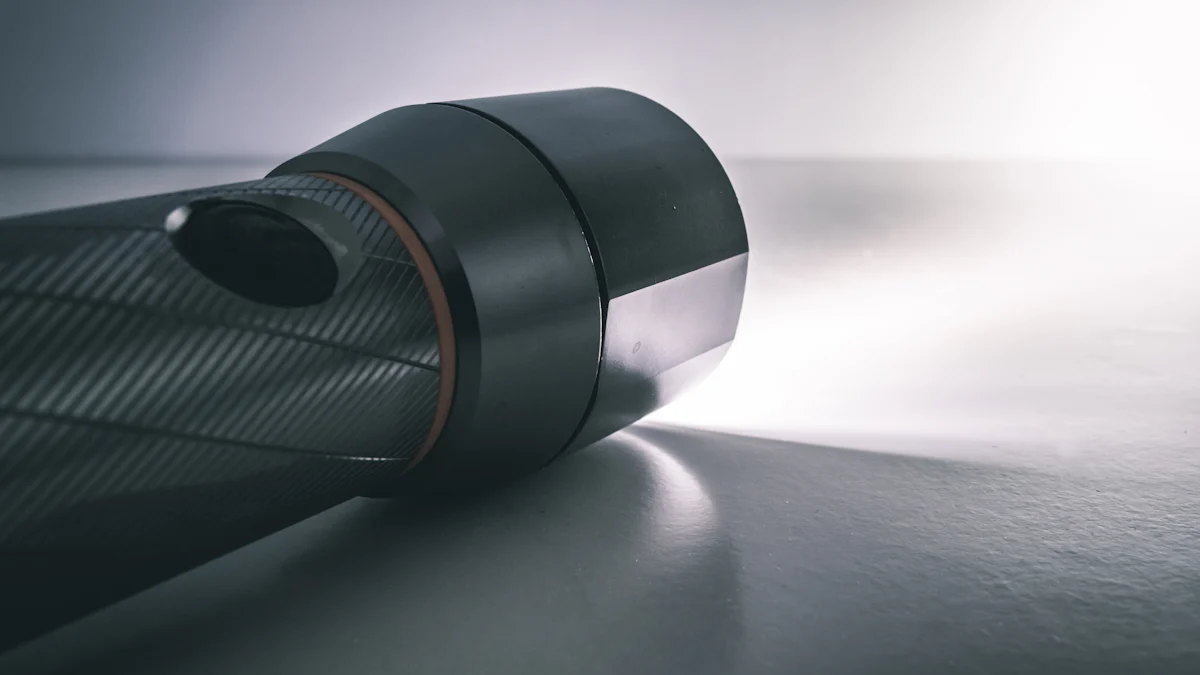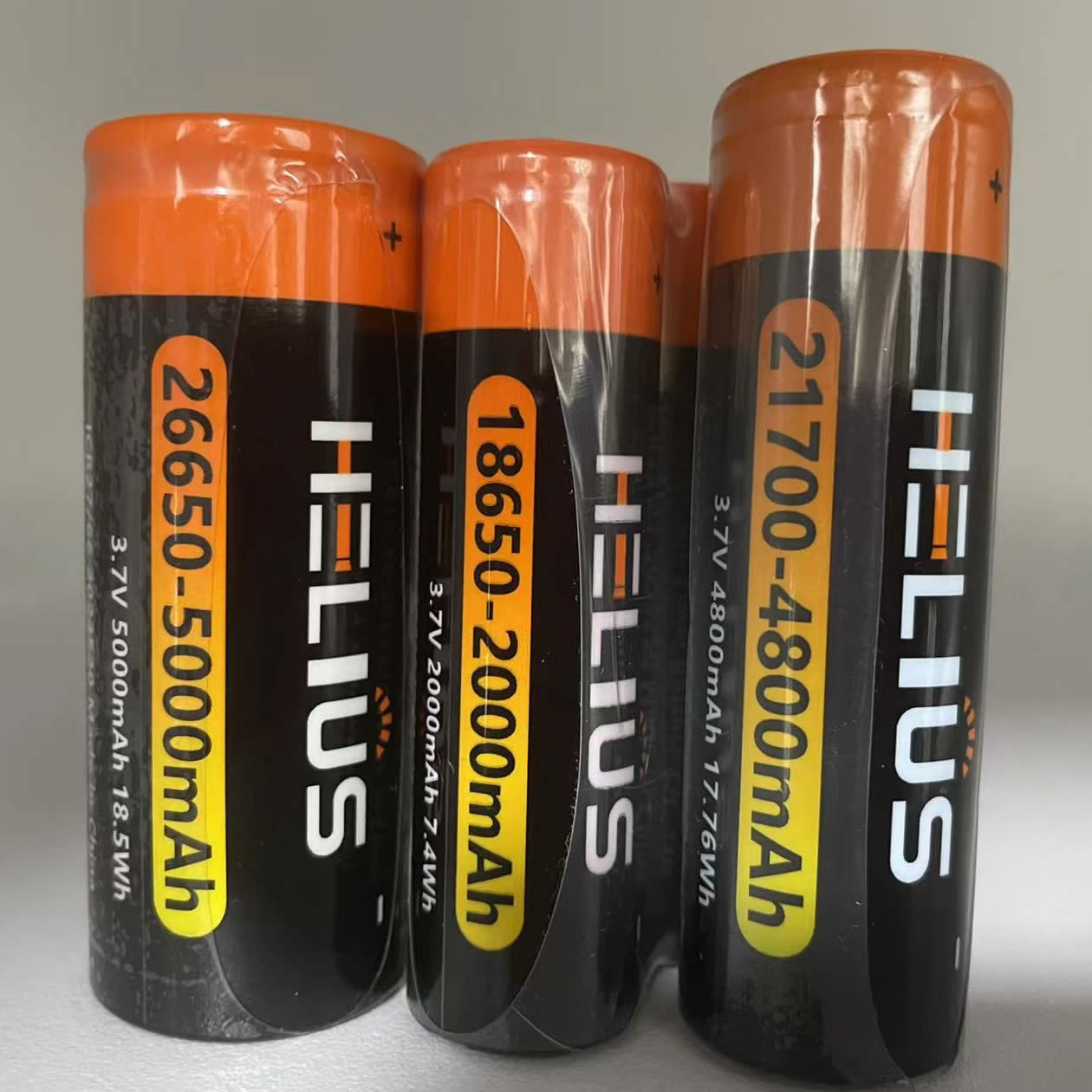How to Select the Right Flashlight Battery

Selecting the right flashlight battery is essential for optimal performance and longevity of your flashlight. The brightness and runtime of your flashlight are significantly influenced by the battery you choose. A poor selection can result in reduced power output and a shorter lifespan. To maintain the health of your flashlight battery, avoid deep discharging and recharge when capacity drops to 20-30%. Overcharging can also damage battery performance, so remove the battery from the charger once fully charged. By understanding these factors, you ensure your flashlight operates efficiently and lasts longer.
Understanding How a Flashlight Works
To choose the right battery for your flashlight, you need to understand how a flashlight operates. This knowledge helps you make informed decisions that enhance performance and longevity.
Basic Components of a Flashlight
A flashlight consists of several key components that work together to produce light.
Light Source
The light source is typically an LED or incandescent bulb. LEDs are more energy-efficient and last longer than traditional bulbs. They convert electrical energy from the battery into visible light.
Power Source
The power source is the battery. It supplies the necessary electrical energy to the light source. Different batteries provide varying levels of voltage and capacity, which directly affect the flashlight's brightness and runtime.
Reflector and Lens
The reflector and lens focus and direct the light beam. The reflector surrounds the light source, reflecting light forward. The lens covers the bulb, protecting it and shaping the light beam.
Role of Batteries in Flashlights
Batteries play a crucial role in the operation of a flashlight. They determine how well your flashlight performs and how long it lasts.
Power Supply
The battery acts as the power supply. It stores chemical energy and converts it into electrical energy when needed. This energy powers the light source, allowing the flashlight to illuminate.
Impact on Brightness and Duration
The type of battery you choose influences the flashlight's brightness and duration. Different types of batteries offer varying levels of voltage and capacity, affecting how bright the light is and how long it lasts. For example, lithium batteries often provide higher voltage and longer runtime compared to alkaline batteries. Understanding these characteristics helps you select the best battery for your needs.
Types of Flashlight Batteries

Choosing the right flashlight battery involves understanding the different types available. Each type offers unique benefits and is suited for specific needs.
Primary Batteries
Primary batteries are non-rechargeable and are often used for their convenience and availability.
Alkaline
Alkaline batteries are a popular choice for many flashlight users. They are widely available and affordable, making them a cost-effective option for occasional use. Alkaline batteries provide a steady power supply, which suits general-purpose flashlights. However, they may not perform well in extreme temperatures or high-drain devices. Their chemical composition, involving zinc and manganese dioxide, ensures a stable voltage output.
Lithium
Lithium batteries have gained popularity for high-performance flashlights. They offer a higher energy density than alkaline batteries, resulting in longer runtime and better performance. Lithium batteries excel in extreme temperatures, making them ideal for outdoor adventures. Additionally, they have a longer shelf life, which makes them suitable for emergency flashlights. You can find lithium batteries in various sizes, including 18650, 26650, and 21700.
Rechargeable Batteries
Rechargeable batteries are an eco-friendly and cost-effective choice for frequent flashlight users.
NiMH
Nickel-Metal Hydride (NiMH) batteries are a greener alternative to disposable batteries. They have a higher capacity than alkaline batteries and can be recharged multiple times, reducing waste and cost over time. NiMH batteries are suitable for flashlights used frequently or for extended periods. They also have a lower self-discharge rate compared to nickel-cadmium (NiCd) batteries, meaning they retain their charge longer during inactivity.
Li-ion
Lithium-Ion (Li-ion) batteries are another popular rechargeable option. They offer high energy density and maintain their charge well over time. Li-ion batteries are lightweight and provide consistent power output, making them ideal for high-performance flashlights. They are available in various sizes and are known for their long lifespan and reliability.
By understanding these battery types, you can select the best flashlight battery for your needs, ensuring optimal performance and longevity.
Key Battery Characteristics
When selecting a flashlight battery, understanding key characteristics like capacity, voltage, and shelf life is crucial. These factors directly impact the performance and longevity of your flashlight.
Capacity and Runtime
mAh Rating
The milliampere-hour (mAh) rating indicates a battery's capacity. A higher mAh rating means the battery can store more energy, allowing your flashlight to run longer between charges or replacements. For instance, NiMH batteries generally have a higher capacity than alkaline batteries, making them suitable for devices that require extended use.
Expected Usage Time
Expected usage time depends on both the battery's capacity and the flashlight's power consumption. A flashlight with a high power output will drain the battery faster, reducing runtime. Lithium batteries often provide longer usage times compared to alkaline batteries due to their higher energy density. This makes them ideal for high-drain flashlights used in demanding situations.
Voltage and Compatibility
Voltage Requirements
Voltage is a critical factor in ensuring your flashlight operates correctly. Batteries with higher voltage provide more power, which can enhance brightness. However, using a battery with incorrect voltage can damage your flashlight. Always check the manufacturer's specifications to ensure compatibility.
Device Compatibility
Not all batteries fit every flashlight. Some flashlights require specific battery sizes or types. For example, 14500 batteries, which use lithium-ion technology, can produce a higher output than standard alkaline or NiMH batteries. Ensure the battery you choose matches your flashlight's requirements to avoid performance issues.
Shelf Life and Storage
Longevity
Shelf life refers to how long a battery can be stored before it loses its charge. Lithium batteries excel in this area, offering a longer shelf life compared to alkaline batteries. This makes them a reliable choice for emergency flashlights that may not be used frequently.
Storage Conditions
Proper storage conditions can extend a battery's lifespan. Store batteries in a cool, dry place to prevent degradation. Avoid exposing them to extreme temperatures, as this can reduce their effectiveness. For instance, lithium batteries perform better in cold weather compared to other types, making them suitable for outdoor activities in varying climates.
By understanding these key characteristics, you can make informed decisions when selecting a flashlight battery. This ensures your flashlight performs optimally and lasts longer, providing reliable illumination when you need it most.
Selecting Batteries Based on Flashlight Type
Choosing the right flashlight battery depends on the type of flashlight you use. Different flashlights have unique requirements, and selecting the appropriate battery ensures optimal performance.
Everyday Carry Flashlights
Everyday carry (EDC) flashlights are compact and convenient for daily use. They require batteries that balance performance and cost-effectiveness.
Recommended Battery Types
For EDC flashlights, alkaline and NiMH batteries are popular choices. Alkaline batteries are affordable and widely available, making them suitable for occasional use. NiMH batteries, on the other hand, offer a rechargeable option, reducing waste and long-term costs. They provide a higher capacity than alkaline batteries, which is beneficial for frequent use.
Considerations for Usage
When using EDC flashlights, consider the balance between cost and performance. Alkaline batteries work well for infrequent use, while NiMH batteries are ideal for regular use due to their rechargeability. Ensure the battery size matches your flashlight's requirements to avoid compatibility issues.
Tactical Flashlights
Tactical flashlights demand high performance and reliability. They are often used in demanding situations, such as law enforcement or search and rescue operations.
High-Performance Needs
Lithium batteries are highly recommended for tactical flashlights. They offer superior energy density and longer runtime, which is crucial for high-drain devices. Various experts highlight that lithium batteries excel in extreme temperatures, ensuring consistent performance in challenging environments.
"Lithium batteries are a popular choice for high-performance flashlights. They provide higher energy density, longer runtime, and better performance in extreme temperatures compared to alkaline batteries."
Durability and Reliability
Tactical flashlights require batteries that can withstand rigorous use. Lithium batteries are known for their durability and reliability, making them an excellent choice for tactical applications. Their long shelf life ensures readiness when needed, even after extended storage.
Outdoor and Camping Flashlights
Outdoor and camping flashlights need batteries that offer long-lasting power and can handle environmental challenges.
Long-Lasting Power
For outdoor activities, lithium batteries are ideal due to their extended runtime and high energy density. They provide reliable illumination for extended periods, which is essential for camping trips or hiking adventures. Rechargeable options like Li-ion batteries are also suitable, offering both performance and sustainability.
Environmental Considerations
Outdoor environments can be harsh, with varying temperatures and humidity levels. Lithium batteries perform well in these conditions, maintaining their efficiency and longevity. Proper storage and handling further enhance their performance, ensuring your flashlight remains a dependable tool during your outdoor excursions.
By selecting the right flashlight battery based on your flashlight type, you ensure optimal performance and reliability. Whether for everyday use, tactical operations, or outdoor adventures, understanding your flashlight's needs helps you make informed decisions.
Comparison Chart of Battery Options
When selecting a battery for your flashlight, understanding the differences between options can help you make an informed choice. Here's a quick reference guide to the pros and cons of popular battery types and their best use cases.
Quick Reference Guide
Pros and Cons
Alkaline Batteries
Pros:
Affordable and widely available.
Suitable for low-drain devices.
Cons:
Shorter lifespan compared to other types.
Not rechargeable, leading to more waste.
Lower performance in high-drain devices.
NiMH Batteries
Pros:
Rechargeable, reducing long-term costs and waste.
Eco-friendly option.
Cons:
Lower energy density than lithium batteries.
May require frequent recharging for high-drain devices.
Lithium Batteries
Pros:
High energy density, providing longer runtime.
Excellent performance in extreme temperatures.
Longer shelf life, ideal for emergency flashlights.
Cons:
More expensive than alkaline batteries.
Requires specific chargers for rechargeable versions.
Best Use Cases
Alkaline Batteries: Best for occasional use in everyday carry flashlights where cost-effectiveness is a priority. They work well in low-drain devices but may not be suitable for high-performance needs.
NiMH Batteries: Ideal for frequent use in devices where rechargeability is beneficial. They are perfect for eco-conscious users who want to reduce waste and save on long-term costs.
Lithium Batteries: Recommended for high-performance flashlights, tactical applications, and outdoor activities. Their ability to perform well in extreme conditions makes them a reliable choice for demanding environments.
By understanding these differences, you can select the right battery for your flashlight, ensuring it meets your specific needs and performs optimally.
Frequently Asked Questions
Common Concerns
Battery Safety
When using a flashlight battery, safety should be your top priority. Always handle batteries with care to prevent accidents. Avoid mixing different types of batteries in the same device, as this can cause leakage or even explosions. Ensure that you insert batteries correctly, following the positive and negative markings. Overcharging rechargeable batteries can lead to overheating, so remove them from the charger once fully charged. If you notice any swelling or leakage, dispose of the battery safely and replace it immediately.
Environmental Impact
The environmental impact of batteries is a growing concern. Non-rechargeable batteries contribute to landfill waste, releasing harmful chemicals into the environment. To minimize this impact, opt for rechargeable batteries whenever possible. They reduce waste and are more cost-effective in the long run. Proper disposal of used batteries is crucial. Many communities offer recycling programs specifically for batteries. Participating in these programs helps protect the environment and conserves resources.
Troubleshooting
Battery Performance Issues
If your flashlight isn't performing as expected, the battery might be the culprit. Check if the battery is fully charged or needs replacement. Ensure that the battery contacts are clean and free from corrosion. Sometimes, a simple cleaning with a dry cloth can restore performance. If the flashlight still doesn't work, try using a different battery type. Some flashlights, especially high-performance models, require specific batteries like CR123A or 18650 Li-Ion cells. These batteries offer high capacity and are ideal for demanding situations.
Maintenance Tips
Proper maintenance extends the life of your flashlight battery. Store batteries in a cool, dry place to prevent degradation. Avoid exposing them to extreme temperatures, which can reduce their effectiveness. For rechargeable batteries, avoid deep discharging. Recharge them when the capacity drops to 20-30%. This practice helps maintain their longevity. Regularly check your flashlight for any signs of wear or damage. Keeping your flashlight in good condition ensures it remains a reliable tool when you need it most.
Choosing the right flashlight battery is crucial for optimal performance and longevity. You need to consider factors like your flashlight’s design, usage, and operating conditions. Each battery type has its pros and cons. For instance, lithium batteries excel in cold climates due to their exceptional performance. Always evaluate your usage pattern and select a battery with the appropriate capacity. Opt for reputable brands to ensure stable performance and a longer lifespan. By making informed choices, you enhance your flashlight's efficiency and reliability.
See Also
Selecting the Proper Battery for Your Torch
Picking the Correct Headlamp Torch
Selecting the Appropriate High Power Torch
